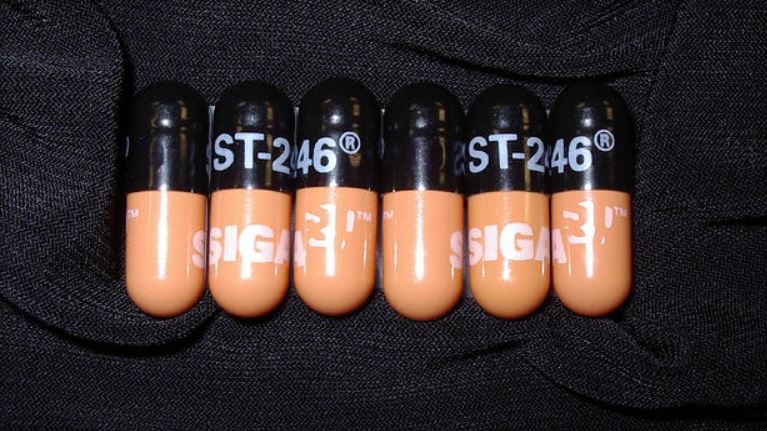
SIGA Technologies announced this month that it has entered into an agreement with the U.S. Army Medical Research Institute of Infectious Diseases to study the post-exposure prophylactic use of TPOXX, a drug currently stockpiled by the U.S. government to treat smallpox outbreaks.
The Cooperative Research and Development Agreement (CRADA) allows SIGA to work with officials at USAMRIID to conduct animal studies under Good Laboratory Practices as required by the U.S. Food and Drug Administration. SIGA has had a 15-year relationship with the Army, as its research unit worked on the early stages of TPOXX development.
“The recent approval for TPOXX was for treatment of smallpox, and we now have the opportunity to expand that to treating people earlier,” said Phil Gomez, SIGA CEO.
TPOXX is an orally administered antiviral drug for the treatment of human smallpox disease caused by the variola virus. An IV formulation is also under development. Two million oral courses of this novel small-molecule drug have been delivered to the Strategic National Stockpile under Project BioShield.
It is estimated that without vaccination or treatment, each person infected with smallpox would infect five to seven others, as rapid spread from person-to-person can occur through speaking, breathing or touching. Additionally, smallpox can be transmitted by direct contact with infected fluids and contaminated objects.
In individuals already infected with smallpox, the smallpox vaccine must be administered within three to four days of infection to be effective, a time when symptoms have not yet appeared. In contrast, as a therapeutic designed to treat smallpox infection, TPOXX has a wider window of efficacy and the studies with the U.S. Army will examine if it can be given at the same time as the vaccine.
In addition, when the smallpox vaccine is delivered via a bifurcated needle, it allows for scaring to occur, giving the body a robust immune reaction.
However, treatment is complicated by the fact that there is no test for the virus during the asymptomatic period. A person only knows they have contracted smallpox once they show symptoms, about 14 days after infection, and, at that point, an individual is highly contagious.
Although there has been little emphasis to create a diagnostic test for smallpox that works prior to the appearance of symptoms, the opportunity to now use TPOXX for treatment during the asymptomatic phase is an important reason to develop one, Gomez said.
Beyond smallpox, future goals for SIGA Technologies may include the use of TPOXX in cancer trials. Currently, researchers use the vaccinia virus, part of the poxvirus family, to attack tumor cells. The body then recognizes the virus and attacks it, a process that kills both the tumor and the virus. In extreme cases, the vaccinia virus may replicate a little too quickly, bypassing the immune system. TPOXX could curtail the spread of that virus, a side effect of the cancer treatment.
“It’s a great example of an unexpected opportunity,” Gomez said. “Sometimes those things pop up during drug development, so we’re excited about that.”




